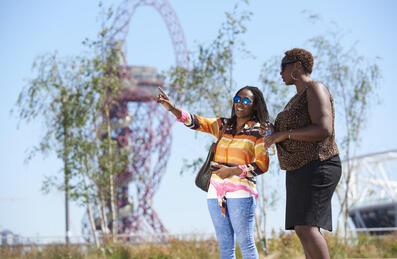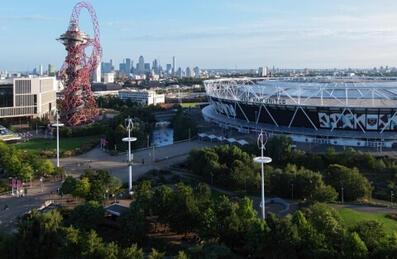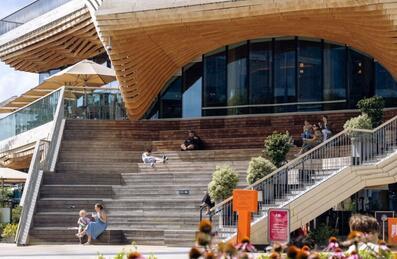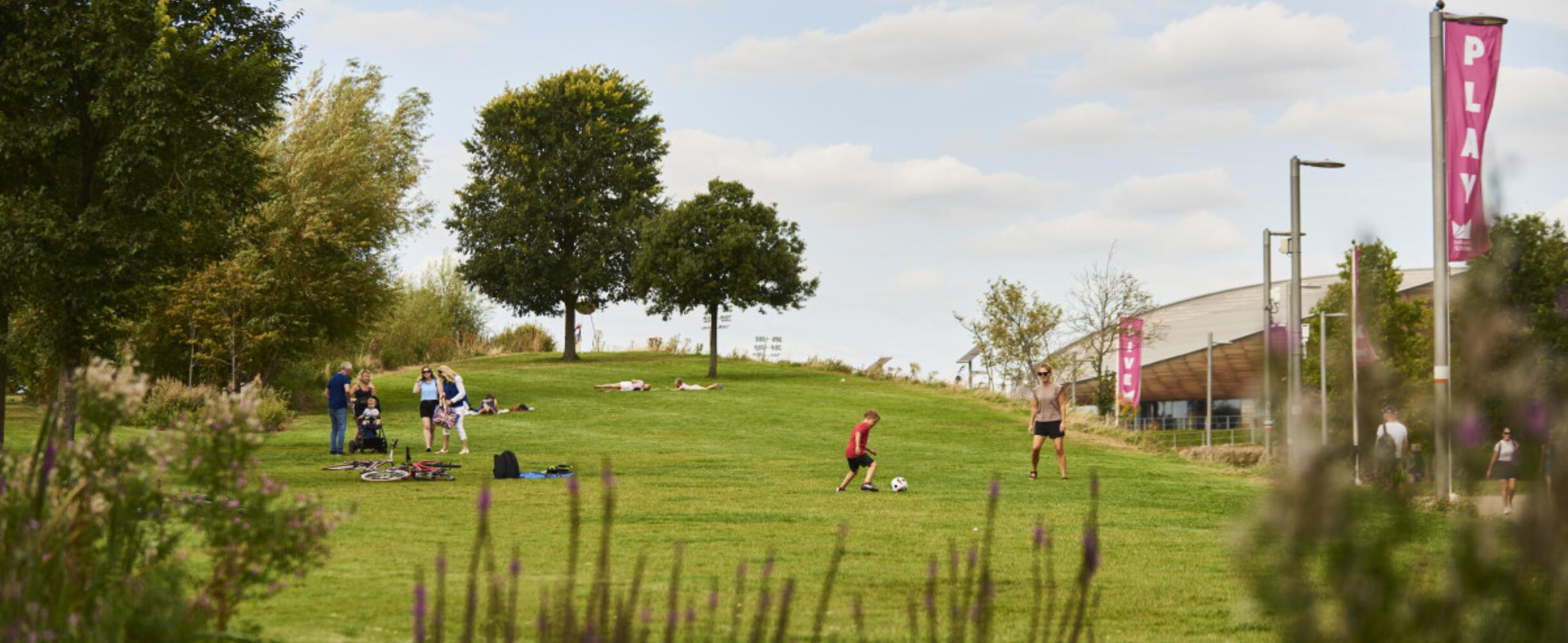
Popular Searches:
Keep up to date
Sign up today for exclusive offers and incredible experiences you won’t want to miss at Queen Elizabeth Olympic Park.
Sign up nowNew species discovered for the first time at Queen Elizabeth Olympic Park
New species discovered for the first time at Queen Elizabeth Olympic Park
Press Release 02/06/2025
-
Three new species of bee found
-
Ringlet butterfly and new species of wasp discovered
-
42 species of birds recorded during one day; 82 species of birds found
-
Otter and eels found
Today, Queen Elizabeth Olympic Park launched its latest Biodiversity Action Plan (BAP), revealing exciting discoveries of new species and demonstrating the Park’s evolution into a flourishing ecosystem for plants and animals.
Prior to the London 2012 Games, the site was mostly industrial wasteland with contaminated soils, polluted waterways and extensive fly-tipped waste. Now spanning 102 hectares, the Park is the largest urban park created in the UK in over a century.
Designed as a place where people and nature could co-exist, the Park now welcomes over 20 million people annually. The latest BAP findings show that, despite ongoing developments such as housing and a new cultural quarter, the Park is a haven for rare species, both flora and fauna.
The latest species discoveries were made during a recent Bioblitz, an intensive biological survey involving members of the public, experts from the London Natural History Society, UCL and the London Borough of Hackney. The survey aimed to identify as many species as possible within the Park, uncovering remarkable biodiversity, including:
-
Three new species of bee: Coastal Leafcutter, Sickle-Jawed Blood Bee and Large Sharp Tailed Bee. These findings mean that 67 species of bee have been recorded on the Park
-
A new species of hyper-parasitic wasp: Hedychrum Rutilans, a species of cuckoo wasp
-
The Ringlet Butterfly was recorded on the Park for the first time during the Bioblitz: 23 species of butterfly have been recorded on the Park
-
42 species of bird recorded
-
23 species of Lichen were discovered on the Park
Other notable species recorded on the Park include kestrels, house martins, sand martins, the nationally scarce black mining bee and large scabious bee, and the soft wing flower beetle (Axinotarsus pulicarius) - an IUCN red-listed species threatened across Europe and recorded in East Village. Also noted are the brown-banded carder bee, Jersey cudweed - a nationally scarce plant that grows from cracks and is illegal to uproot without a licence - a pair of Kingfishers suspected be breeding, a species of cuckoo wasps (Hedychrum rutilans), confirmed breeding bird species such as Common Linnet and Black Redstart, the toadflax brocade moth, the European otter, and the green hairstreak butterfly.
In a new development, the Park’s design and management team are working collaboratively with the on-site ecologist to implement improvements that respond to the data collected in the parklands. Together, they ensure that all developments align with BAP targets, incorporating ecological features such as pollinator patches and bird nesting boxes into construction and maintenance proposals.
Tom Bellamy, Ecologist on Queen Elizabeth Olympic Park, said: “I have been really surprised at the biodiversity that’s been achieved here in such a short time – especially considering how polluted a lot of the ground here was before the London 2012 Games. We have kingfishers, otters, eels and it’s incredible that nationally scarce species of bees have been found here.
“Part of my job is to establish breeding populations for a wide variety of select species that we want to breed on the Park. I’m proud of what’s been achieved so far but there is always more we can do.”
Pippa Henshall, Senior Landscape Design Manager, London Legacy Development Corporation, said: “The results of bringing together different expertise from our teams that include landscape architects and landscape managers mean that we develop habitats that support the rich biodiversity based on the data collected in the Park. We can collaborate to help deal with the climate crisis and enable people to access nature. This is great for health and wellbeing in the urban environment, and we can monitor the outcomes.”
Shazia Hussain, CEO, London Legacy Development Corporation, added: “Queen Elizabeth Olympic Park was envisioned as more than just a legacy of the 2012 Games - it was designed as a blueprint for how urban regeneration can create healthy, liveable, and sustainable communities where people and nature thrive side by side. These extraordinary discoveries of new species are a powerful reminder of what’s possible through the successful integration of green infrastructure. As the Park continues to evolve, we remain deeply committed to preserving and enhancing its biodiversity, ensuring it remains a vital sanctuary for both wildlife and people for generations to come.”
The Biodiversity Action Plan can be read in full here.







